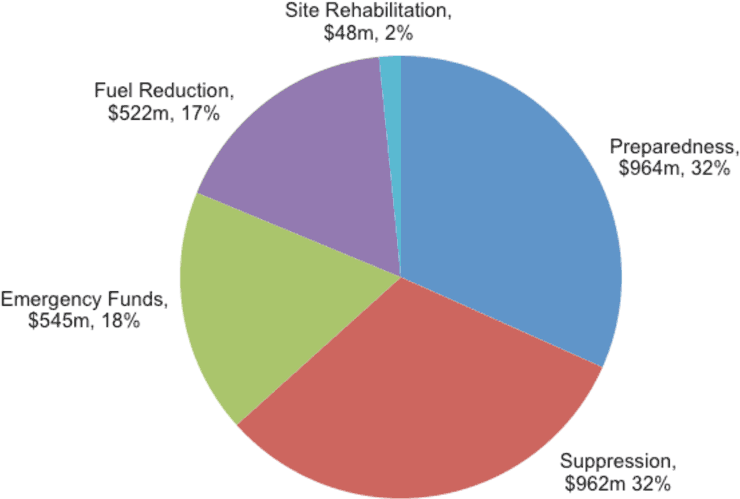Nature’s fury or flawed design – who takes the blame?
By Muhammad MubashirPublished On 04 Oct 2025
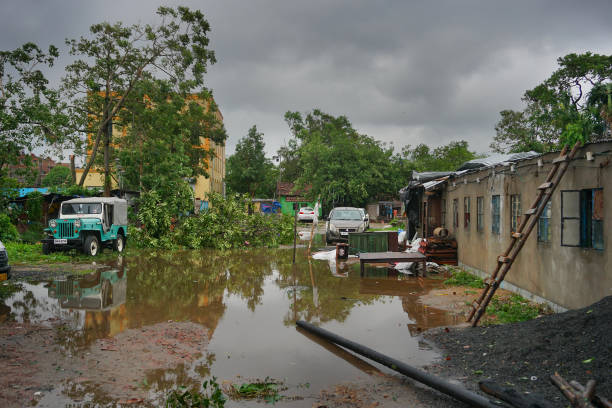
The raging floodwaters tore through the provinces of Sindh and Balochistan, drowning the country’s southern belt. This year, overloaded monsoons chose a different path. They started high in the Himalayas and worked their way down, first the northern valleys, then the plains, while extra torrents crossed over from India and pushed the rivers beyond their banks.
This year’s monsoon has carried more than the usual deluge. Reports were abuzz of ill-timed snowfalls, debates raged about whether cloudbursts are the culprits, while a string of glacial-lake outburst floods was also observed. First, the mountain streams burst their stone-studded banks; then rivers poured into fields and swamped crops. In the towns, sewer drains clogged, and the streets turned into feet-deep brown canals.
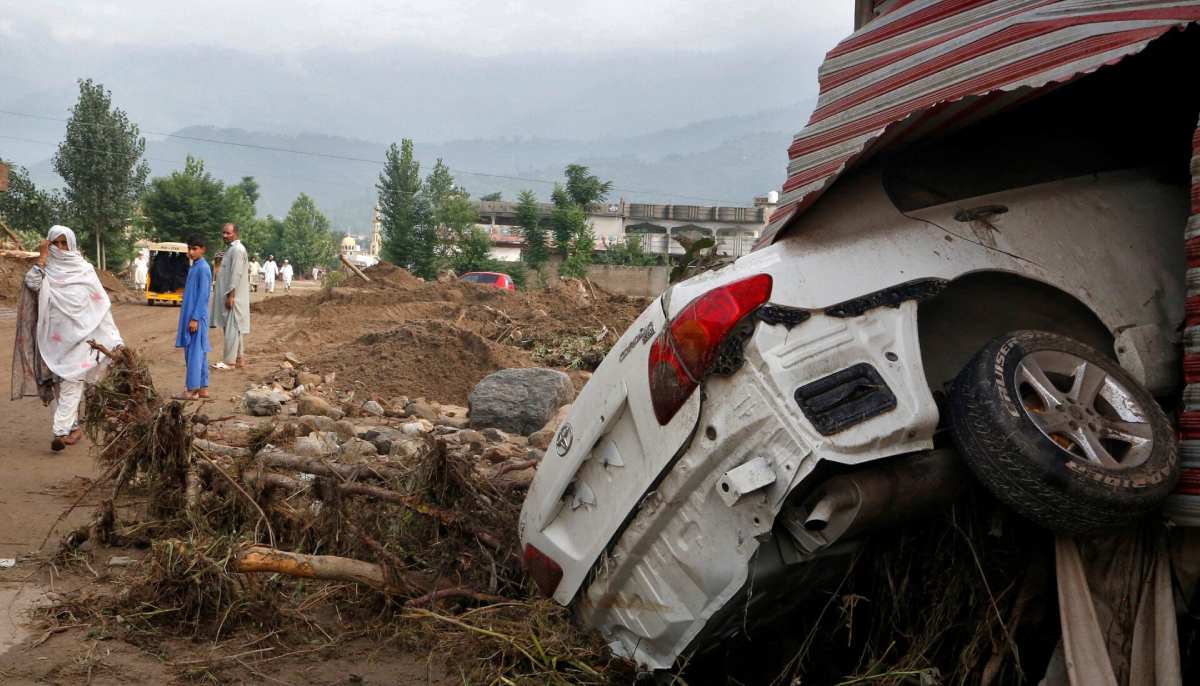
The losses are still being counted. Officials say more than a thousand people have been hurt and roughly the same number killed since late June. Khyber Pakhtunkhwa (KP) alone lost over five hundred lives; Punjab followed with just over three hundred.
About 6.9 million people across every region, from the far north in Gilgit-Baltistan (GB) down to the plains of Sindh, have felt the floods’ impact, United Nations workers report. Almost three million were forced to leave their homes; about 150,000 ended up in government relief camps, most of them in Punjab.
Climate scientists have been warning for years that Pakistan sits on the frontline of global warming. Germanwatch’s 2025 Climate Risk Index, which reviews events from 2022, ranked Pakistan as the country most severely hit by climate change. Yet one question remains: can climate change by itself explain disasters of this scale and frequency?
Attention has turned to Pakistan’s own part in making the damage worse. Prime Minister Shehbaz Sharif, in August, travelled to the worst-affected districts of Khyber Pakhtunkhwa to get a first-hand idea of the scale of the damage and the possible causes, apart from unusually heavy rains. And it transpired that give or take, the catastrophe was as man-made as it was natural. Following his discussions with the experts on the ground, he held illegal constructions in riverbeds, unregulated mineral and stone mining, and loss of tree cover as some of the direct causes of this devastation, vowing a nationwide clampdown on those responsible. “Nature may have set the stage, but human negligence helped turn heavy rains into a catastrophe,” the PM said in one of his statements.
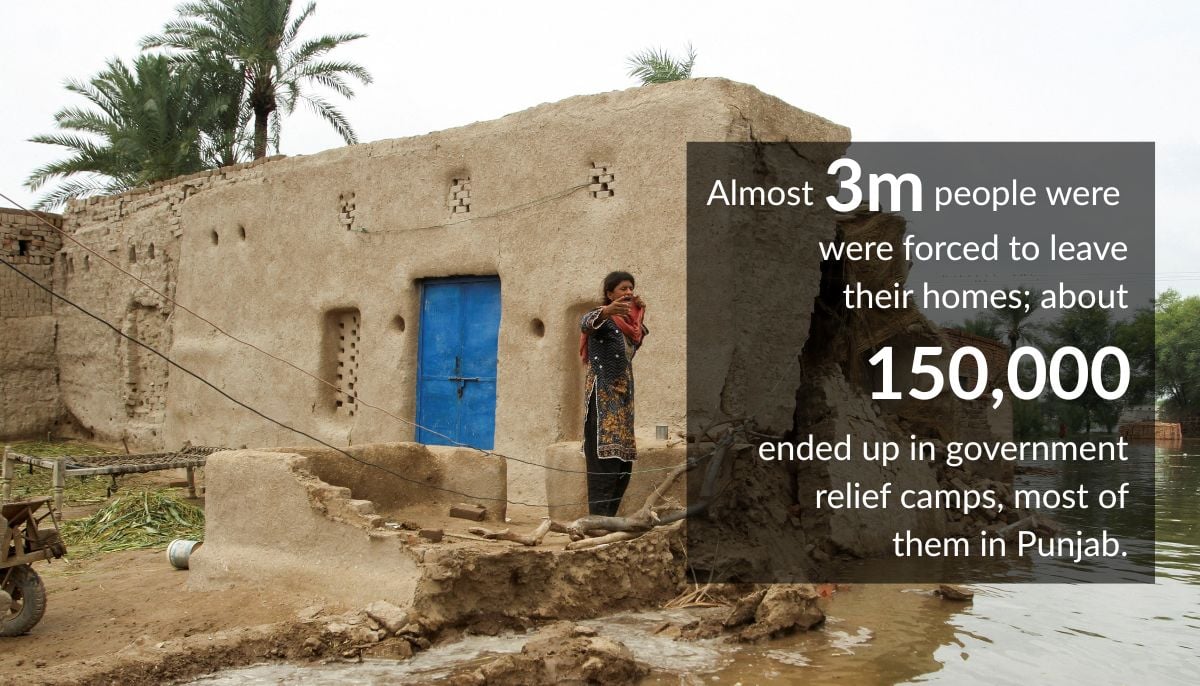
The pattern of the 2025 floods shows why. The Himalayan foothills in GB, Azad Jammu and Kashmir (AJK), KP, and the Margalla Hills near Islamabad were hit first by the mountain monsoon. Farther south, Punjab’s big rivers swelled as floodwaters crossed from India, pushing the threat on to Sindh. Balochistan, meanwhile, stayed parched and continues to sink deeper into drought. It is a stark reminder that climate stress can strike in opposite ways at the same time.
This mix of crises, flood in one province and drought in another, makes it difficult to pin the blame on any single cause. Pakistan’s ordeal this year is not only a story of global climate change. It is also a reckoning with decades of short-sighted development and environmental neglect.
Let’s take a look at monsoon devastation in the Himalayan regions.
Disaster risks in GB reach new heights
Typically, the framework for the GB region to receive winter snowfall is during January and February. However, this year it fell in March, with experts saying the delay disrupted the snowpack’s formation and altered the glacier’s growth pattern.
Assistant Professor Dr Salar Ali, Head of the Department of Earth and Environmental Sciences at the University of Baltistan, Skardu, pinned the disruption in the glacier-forming process on late snowfall. Resultantly, the follow-up monsoon destabilised the not-so-compact snowpack, triggering avalanches, imperilling the vulnerable communities in the low-lying areas.
According to the assistant professor, this year GB witnessed a rise in temperature, mainly in Gilgit city, Chilas in Diamer district, and Bunji in Astore district, which turned into a climate factor and led to the rapid melting of glaciers.
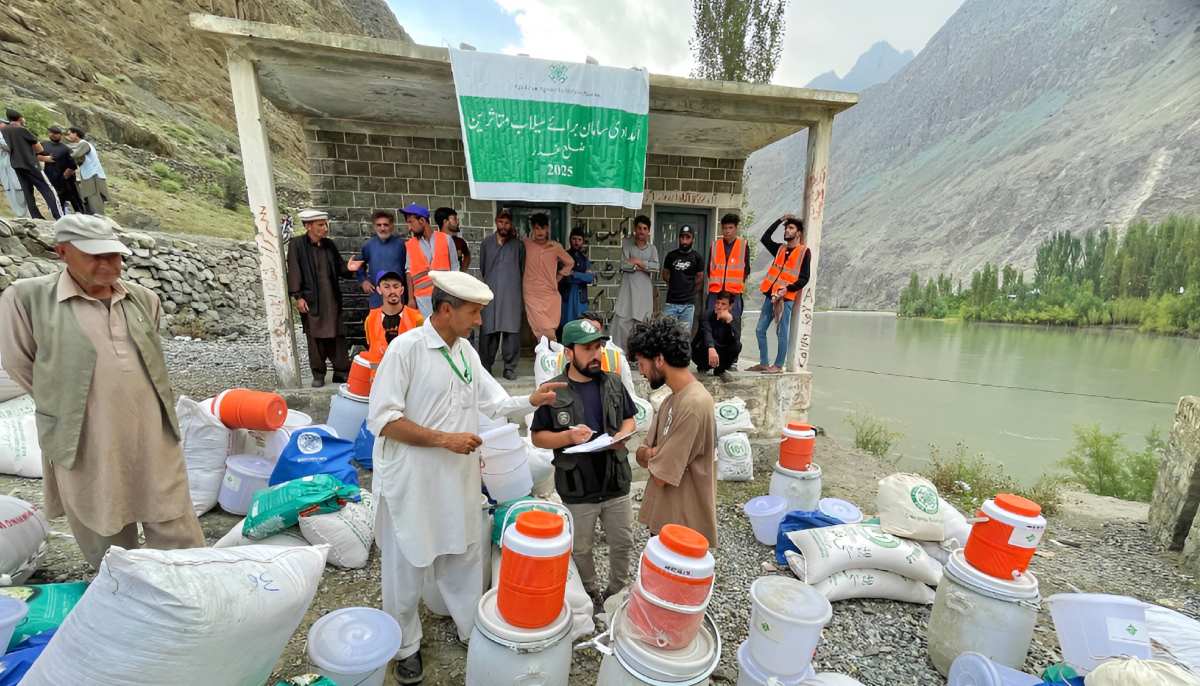
After this year’s monsoon, reports of cloudburst events spread across Pakistan. The term caught on in the media, and almost every heavy downpour was confidently reported as a cloudburst. However, Anjum Nazir Zaighum, a senior meteorologist at the Early Warning Centre of the Pakistan Meteorological Department (PMD), told Geo.tv that as of September 25, 2025, Pakistan had not recorded a single cloudburst this year — an event defined as 100 millimetres of rain falling within an hour over an area of 30 square kilometres.
As per Dr Ali, cloudbursts or not, there were excessive rains in GB during the 2025 season, which contributed to the devastation, causing increased landslides as the region’s geography is steep, making low-lying areas prone to such situations, leaving scores homeless and without livelihoods.
Talking about environmental degradation, Dr Ali pointed out that GB’s glaciers are shrinking at a pace faster than anticipated because of huge carbon emissions from the highly industrialised neighbours — India and China.
“Mineral mining and increased deforestation have weakened the region’s mountain terrain, making it more vulnerable to floods,” he added.
Rains, deforestation fuel AJK’s vulnerability
This year’s monsoon was a treacherous one as it brought an unprecedentedly pattern-defying rainfall to the AJK region. The result was a never-before-seen urban flooding in the foothills of the Himalayan region, threatening the local infrastructure.
“AJK districts, including Muzaffarabad, Bagh, Neelum, and Rawalakot, were pounded by massive rainfall in the 2025 monsoon, unleashing flooding and devastation in the urbanized parts of the region,” Shafiq Abbasi, Director of AJK's Environment Protection Agency (EPA), said.
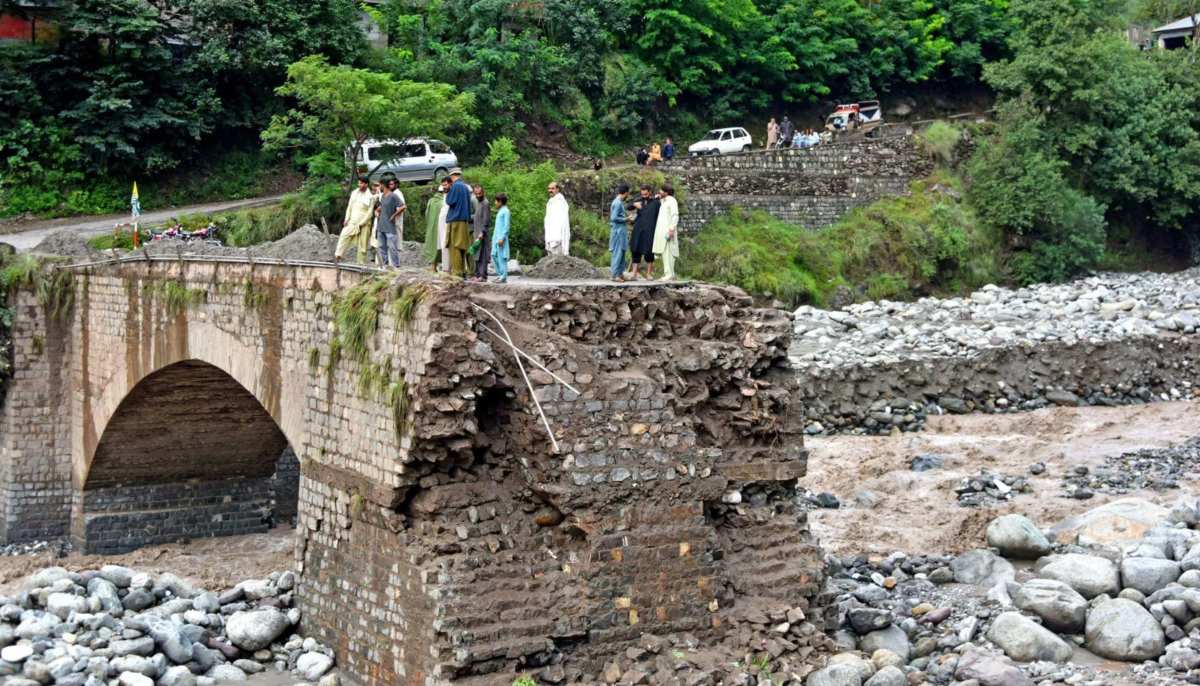
The AJK floods left behind a trail of 100 kilometres of damaged roads, including 33 bridges, shutting down communication and agriculture supply chains.
“The prolonged monsoons shrink the annual livestock fodder storage, which is stored in these months for the harsh winters when communities are stuck in their places.
According to the EPA Director, there has been deforestation in the region; however, its impact has not been quantified. One example of deforestation was locally reported in August at Noseri Dam when it received a huge quantity of cut trees from uphill through flash floods.
Environmental decay leaves KP exposed
KP recorded more human losses in the 2025 Pakistan monsoon floods than any other region. Dr Muhammad Bashir Khan, a former Director General of the Environmental Protection Agency (EPA) KP, termed unregulated tourism leading to increased construction of concrete buildings, and marble industry blasting, as major devastating factors in the mountainous province.
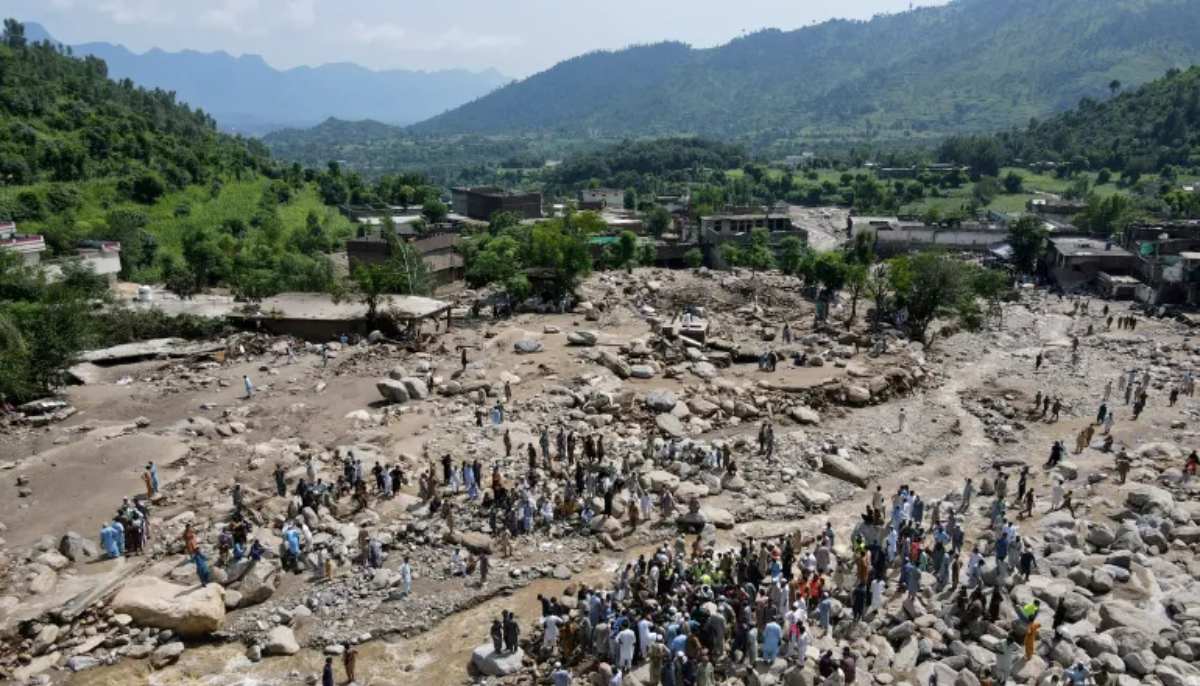
“KP faced flash floods this season mainly in Buner, Bajaur, Battagram, Mansehra, Swat, and Shangla, which submerged or washed away entire villages and the destruction claimed many lives and caused heavy losses to infrastructure and livestock,” Dr Khan said.
He added that the use of explosives in marble quarrying does not follow international practices, such as slab cutting, creating cracks that weaken the mountains. Dr Khan urged strict enforcement of environmental laws to reduce future disasters.
Climate crisis meets weak governance in capital
This June, Islamabad Capital Territory (ICT), the country’s capital city, known for its moderate temperatures, actually experienced extreme heat, with mercury rising to 40°C. According to experts, a high percentage of humidity compounded the heat, making it feel closer to 50°C.
“Monsoon suddenly entered Pakistan early (May-June), and it was influenced directly by the climate change patterns rather than El Niño or La Niña factors,” Zainab Naeem, a climate researcher at the Sustainable Development Policy Institute, said in a conversation with Geo.tv.
“With high humidity and surface temperatures already in play, the atmospheric convection became intense, causing the clouds to form abruptly and subsequent heavy rainfall or cloudburst events.”
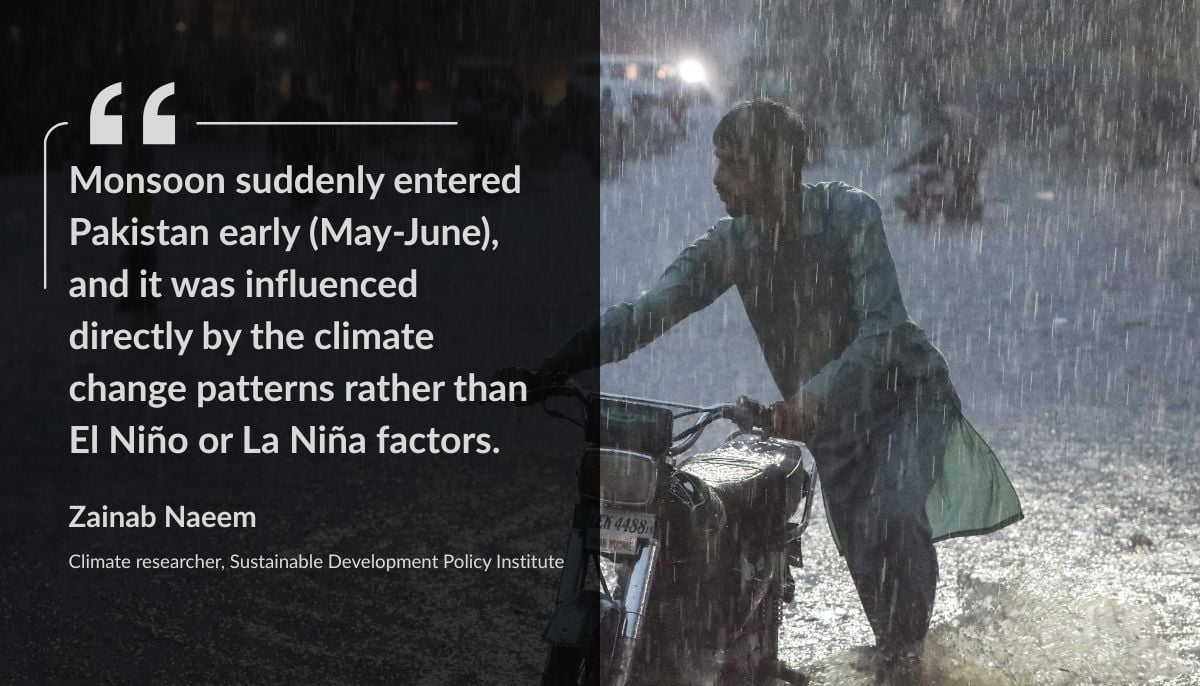
Naeem added that streams and lakes in the Potohar region, which serve as Islamabad’s catchment areas, were heavily encroached.
“For example, there has been illegal land grabbing in places like Saidpur Village, Korang, and Rawal Lake, where housing societies have blocked floodplains and nullahs.
“This encroachment has complicated the flooding problem.
“In Saidpur, a stream that had dried up decades ago because of illegal construction of restaurants and housing societies on its bed and along its banks reclaimed its path this year, causing devastation,” the researcher said.
She also warned that the shrinking urban forests on the Margalla Hills are raising Islamabad’s risk of flash floods. Naeem said this shows how encroachment, poor planning, and weak governance are making the effects of climate change worse.
Transboundary floods from India
The 2025 transboundary monsoon floods from India came raging into an unprepared Pakistan through the otherwise dry Chenab, Ravi, and Sutlej rivers. The massive surge of excess water from the other side of the divide caught us off guard, and within days, tens of thousands of acres across Punjab’s plains were submerged. The opening of floodgates by our neighbor that had vowed not to let Pakistan have a single drop of its water overwhelmed infrastructure and agriculture. Under the 1960 Indus Waters Treaty, Pakistan controls the western rivers and India the eastern ones.
Dr Muhammad Younis Zahid said trapped greenhouse gases are stretching monsoon rains over the Himalayas, and warned that global warming could bring more floods and droughts.
He warns that global warming will trigger increased floods and drought events in the Himalayas.

“In 2025, there was heavy rainfall in the catchment areas of India that prompted the opening of dams’ spillways. Because of this, the Ravi River in Pakistan’s Punjab flowed for the first time in nearly three decades. Similarly, the Sutlej River also surpassed previous intensities in the recent past, thus witnessing unprecedented flooding,” Dr Zahid told Geo.tv, and emphasised that there were excessive rains in Punjab that would have affected the region even if India hadn't released floodwater.
He blames human activities for environmental degradation and disasters in Punjab.
“Housing societies have sprung up in the middle of rivers, blocking their natural flow and disrupting waterways,” the expert said. “Illegal construction along rivers destroys trees and plants, causing deforestation and adding to greenhouse gas emissions.” He added that floods have caused major agricultural and economic losses for rural communities in Punjab.
“Paddy rice crops were hit in the upper Punjab. He suggests that, for the future, there is a need to adapt agricultural practices in view of global warming, focusing on crop varieties resilient to emerging environmental trends,” Dr Zahid said.
Sindh’s narrow escape
In Pakistan’s 2022 floods, Sindh faced 70% of total losses, but narrowly escaped devastation from water coming from Punjab this year.
Engineer Khalid Hyder Memon, former Secretary of the Sindh Irrigation Department, said that despite inaccurate warnings and meteorological forecasts from Punjab, Sindh had time to prepare for the floods.
“At Guddu, Sindh’s first barrage on the River Indus, there were high floods with water discharge of 500,000 to 700,000 cusecs.
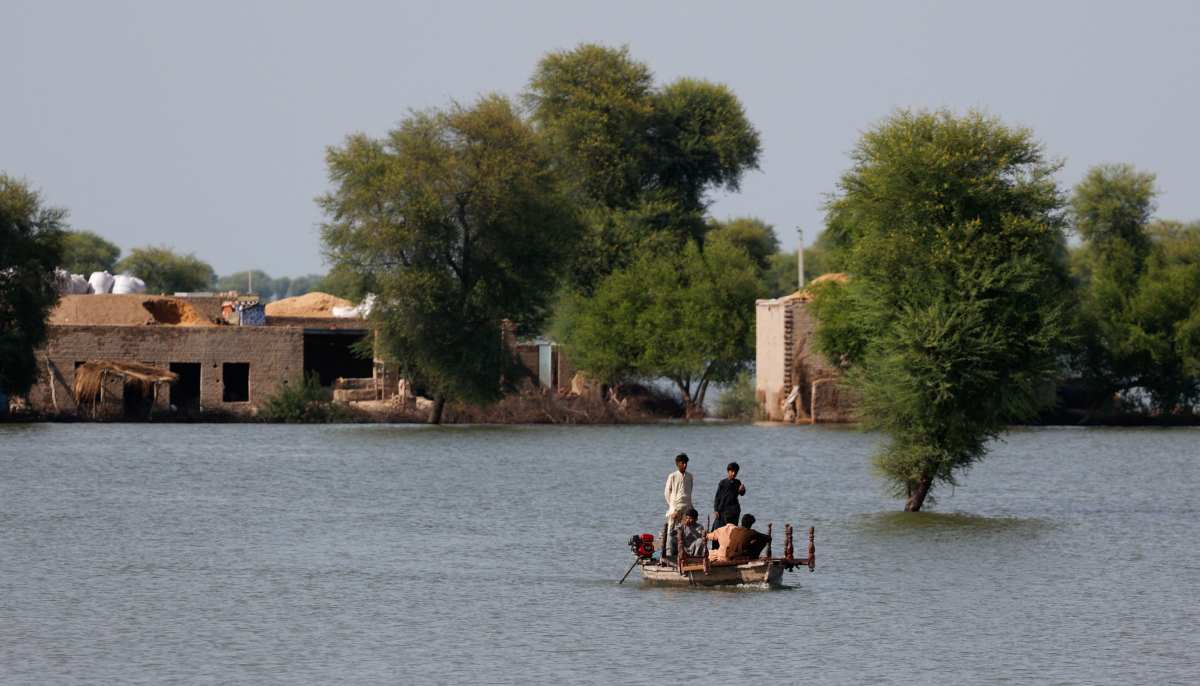
“As the water advanced towards the Sukkur Barrage, it passed without major issues.”
He opined that water from Sukkur to Kotri Barrage could pose problems downstream.
The former secretary said Karachi was hit by heavy rains in September, causing the Malir River to overflow, damaging Shahrah-e-Bhutto in the Malir area and flooding low-lying neighbourhoods. “If Sindh wants to prevent future floods, it needs better planning and stronger infrastructure along the Malir River,” he added. There are clearly road design failures,” Memon pointed out.
Balochistan braces for deeper droughts
For 2025, the Pakistan Meteorological Department (PMD) predicted above-normal rains nationwide. However, Balochistan did not receive its average monsoon rainfall, worsening ongoing drought conditions.
“Rain-fed Balochistan remains highly dependent on seasonal monsoon rainfall. The ongoing monsoon is nearing its end, but so far the province has not received rains up to its average,” Naveed Ahmad, Director of Planning and Coordination at the Provincial Disaster Management Authority (PDMA) Balochistan, informed Geo.tv.
According to the PDMA director, the PMD earlier this year declared a moderate drought in eight districts of Balochistan. Out of the province’s 36 districts, the PDMA is conducting a needs assessment for drought in 16 districts to determine its intensity. These districts are located in the Naseerabad, Lasbella, Makran, Loralai, and Rakhshan divisions.
Rethinking Pakistan's flood management
After the 2025 floods, debate returned in Pakistan’s media. Some said that building more dams, including Kalabagh, could have reduced flood losses and increased hydropower. Experts like Dr Hassan Abbas, a hydrology and water resources specialist, disagreed. He said dams had limits, and Pakistan needed a new approach to manage floodwater.
“In Pakistan, dams are for hydropower and storage, not flood control. Unlike other countries, which keep flood-control dams empty to absorb water, Pakistan keeps dams full for power. Water is released only when full, which can worsen floods,” Dr Abbas explained.
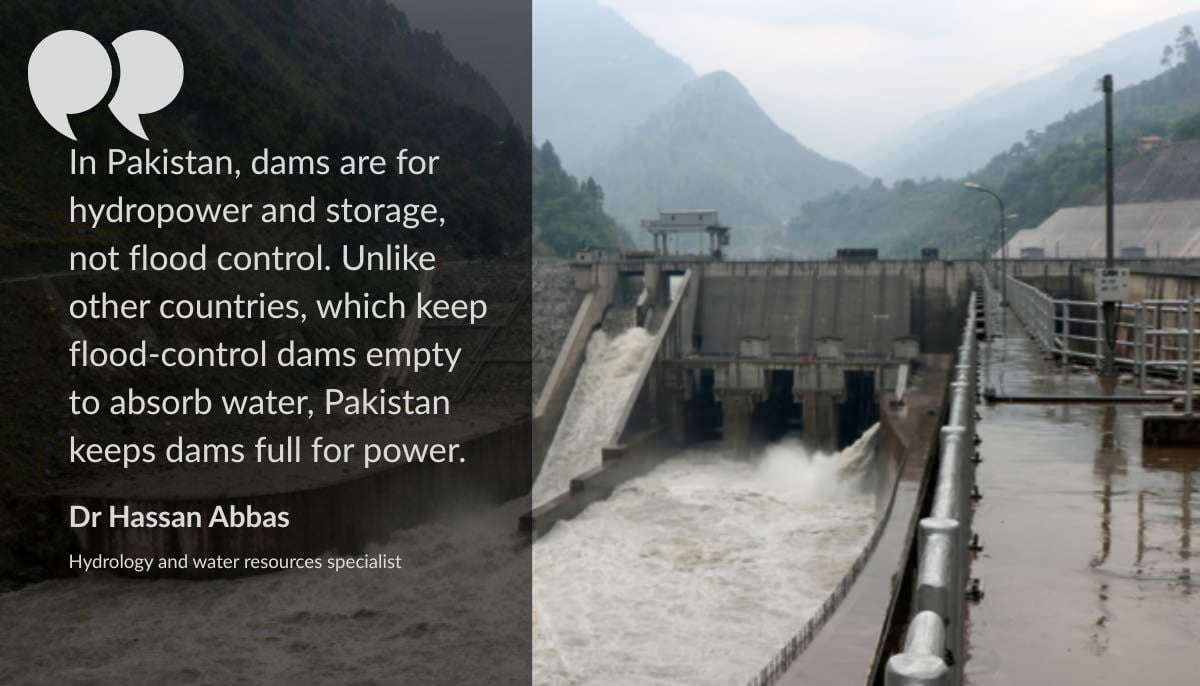
He gave the example of 1992, when Mangla Dam’s gates were opened after heavy water inflows, creating a large wave that worsened flooding. “Small floods make people think rivers have less capacity, leading to encroachments, and when big floods happen, these areas are at risk.”
He added said Pakistan could use nature-based solutions, like the Dutch “Room for the River” plan, which manages rivers, restores wetlands, and reduces flood risks naturally. Floods also benefit soils, wetlands, and underground water sources. Controlling them too much can lower soil fertility, increase the need for chemicals, and harm soil health.”
He added that storing water in sand aquifers in open riverbeds could hold 500 million acre-feet, almost 100 times the storage in Pakistan’s dams.
“Using pumping technology could be cheaper and sustainable, while Pakistan’s solar potential can also provide energy cheaper than hydro, reducing dependence on dams,” he said.
Pakistan must act fast before an even bigger catastrophe is upon us. Put simply, rivers need to flow freely, hills and forests should be protected, cities must plan for floods, and communities should be ready.
Only then can future disasters be limited.







